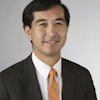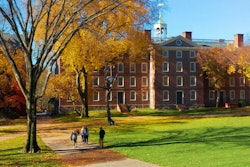Several hundred educators participated recently in “Community Connection: Recent Incidents of Racially-Motivated Bias, Violence and Hate Against Asian Americans,” produced by ACUHO-I (Association of College and University Housing Officers—International) and NADOHE (National Association of Diversity Officers in Higher Education).
Presenters Dr. Sumun L. Pendakur, a diversity, equity and inclusion strategist, and Dr. Kimberly A. Truong, executive director of Justice, Equity, Diversity and Inclusion at MGH Institute of Health Professions, provided historical context for recent acts of anti-Asian violence in the U.S. and highlighted ways higher education can work to eradicate the hate.
Dr. Luis Inoa, associate dean of the college, residential life and wellness at Vassar College moderated the discussion. “What has brought us together is tragedy and ongoing anti-Asian violence and hate.”
The participants were polled on several questions, including what actions their institutions have taken to respond to the spate of anti-Asian violence.
“We have since a year ago now seen a sharp uptick in the violence against people perceived as Asian and Asian American, particularly elders, particularly women, particularly those who are low-income and vulnerable, those who are doing collections from trash cans of bottles and cans, folks who are at the margins already,” said Pendakur.
Pendakur said that Asians and Asian Americans experiencing the biases and doing the work on campuses are dealing with double stress, noting the 2007 work by political scientist Dr. Jane Junn, “From Coolie to Model Minority,” which tracks the evolution of Asian American identity in the U.S. from the late 18th century to the 1970s.
Asian American racial identity is not simply being Asian in America, the panelists noted. It is how that racial identity has been shaped by the twin prongs of U.S. labor needs and U.S. foreign policy interests.





















